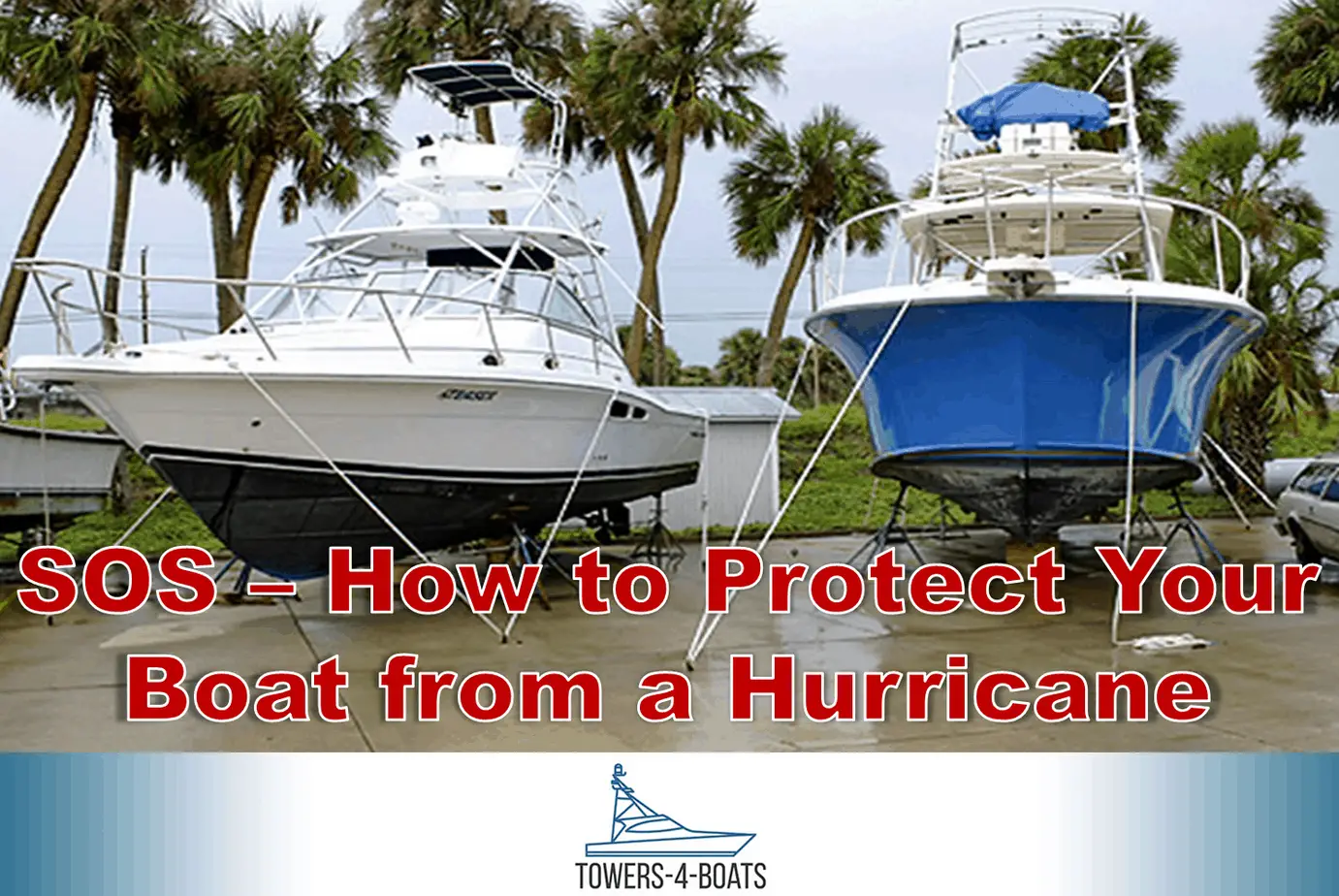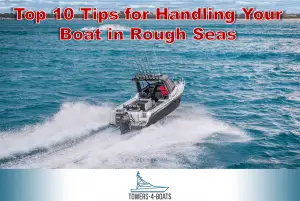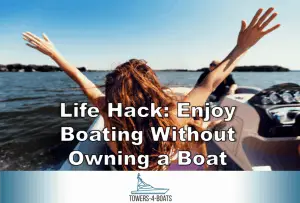Experts Share Their Strategies to Keep Your Boat Safe During a Hurricane
Hurricanes slam U.S. coastlines with an increased intensity every passing year, from Texas to Key West to the BVIs and other boating destinations.
In the world of hurricane territory, storm surges, storms, rainfall, waves, and even the occasional tornado are all there. And to survive these natural disasters, preparedness is important.
In particular, boaters should know how to protect a boat during a hurricane.
But what’s the first move this extra-nasty weather is supposed to knock at your dock?
When the next storm rolls in, here are some ideas to help you protect your boat and keep it afloat.
Start with an Evacuation Plan
In a storm, know what to expect and prepare accordingly. Build for yourself, your family, and pets an evacuation plan.
Long before a hurricane warning is issued, you may want to get ready. Training to be a storm-watcher is a part of planning.
If you have already stored your boat at a marina, check with the harbormaster to find out about the hurricane plan that is already in effect.
Have a Backup Plan
- Plan A: Take your ship as far away as possible from the sea and coastline and secure it at home or a nearby storage facility.
- Plan B If there is no time and minimal choices, go with Plan B and, as best you can, at least protect it in the sea.
We’ll break down these plans below into more information about how to better protect your boat in a hurricane. However, whether you are using Plan A or Plan B, here are the initial steps that you should take:
Make Certain You Have Insurance for Storm Damage
Boats get scattered around the shoreline during a storm. Check the insurance for your boat to make sure that it has hurricane coverage. Chances are, if you live in an environment vulnerable to hurricanes, you’ve got it. But anyway, double-check.
Companies such as BoatUS/Geico specialize in insurance for vessels and are excellent places to start with quotes.
Storm Surges are the Greatest Risk to Boats
When preparing for hurricanes, storm surges carry water onshore and are frequently overlooked. As the boat tries to continue afloat, this may cause significant damage because it places docks and dock lines underwater.
In hurricanes, waves of up to 10-feet are common to bear in mind.
Take Down Sails, Roofs, and Covert
Whether or not you are on the water, remember to remove all the extra things from your boat that could become a sail. This includes dodgers from powerboats, biminis from pontoons, and sailboat sails.
Heavy Rain is a Risk Too
During a storm, don’t underestimate how much rain can fall. Having between six and 12 inches of rainfall during a 24-hour cycle is not unusual.
Rarely are cockpits 100 percent waterproof and bilge pumps can only pump so quickly. Torrential rain often sinks ships, so it’s better to stick to Plan A and try to secure your ship indoors, probably in your garage.
Ballast Helps Protect Your Boat
The ocean has been endowed with immense energy and can reach tremendous heights with these waves. There can be breaking waves that exceed three to six feet high, including in harbors and marinas that are usually calm. Note, hurricanes, even though they are becoming more common, are not the rule.
Hurricanes Can Create Tornadoes!
Hurricanes have offspring and tornadoes also breed. There is nothing you can do to prepare if a tornado touches down.
Your best option, though, is to get far away from the coastline and be ready when the hurricane makes landfall if you have a trailer to carry your boat. You’re no longer in Kansas, after all, so get your ship back to shore.
Best Bet – Move Your Boat Inland
Where do you go if you need to move your boat? A marina nearby? About your garage? Garage for your buddy?
Consider the time it would take to get the ship ready, load it, and probably fight traffic. Your e-ticket ride to a safer shelter away from surges and the potential for tornado touchdowns maybe a trailer.
Keep Your Trailer in Good Condition
Don’t disregard your trailer. When you try to outrun a storm, there’s nothing worse than two flat tires and some rusty wheel bearings. Make sure your trailer and your boat are maintained properly regularly.
You’ll want to tie the trailer to the trees or anchor it with an auger if you leave your boat on the trailer during the hurricane. Make sure to remove any gear that could become a sailor could be weakened by rainfall, as described earlier.
Store Your Boat Indoors
In comparison to your car, if you take your boat home, it is best to store it in the garage (sorry, car).
About why? Since your boat weighs less than your vehicle, most likely. Not to mention, if it’s held outdoors, the boat sits higher in the air and can blow over in strong winds.
Heavy-Duty Jack Stands are Great
It takes the same form of planning to leave your boat on jack stands as a trailer does. If required, you may want to strengthen the stands with chains and plywood as well.
Make sure to get the right jack stand for the hull of your boat: Regular Flat Jack Stand (check Amazon price) and Keel Jack Stand (check price on Amazon).
Davits and Lifts are Risky
Insurance firms and members of their staff often cringe at the prospect of leaving their boats during a hurricane on a hoist or lift. That’s because insurance firms are getting hundreds of claims for damage to boats left on lifts and blown off their cradles. Moreover, collapsed lifts also leave ships spilling across the shipyard.
Backup Plan – Anchor or Mooring
Your only choice is to stay on the water if you can’t carry your boat to a safer spot. So you need to learn how to moor and anchor during a hurricane to protect your boat. And learning how to do this is half the war. To save the day, here’s a good battle plan.
Move Your Boat to a Protected Waterway
Leave large bodies of water and look for smaller canals, reservoirs, and rivers (if available). These regions are best referred to as “hurricane holes” which provide less wind and an alternative to otherwise crowded marinas.
And still, anchor your ship in the wind with the bow facing it.
Long Lines are Important
During storms, boats on docks get bounced around. Expect to see it blown out of the harbor and potentially trapped if it breaks loose. Use extra care and long dock lines while you’re at a fixed dock in a storm!
The BoatU.S. representatives Using correct dock lines, the Cat team reports that 50 percent of boat damage could have been avoided.
So make sure you use longer, wider lines and plan yourself sensibly. Practice tying up and build a dock strategy for hurricane line management if you store your boat in hurricane-prone areas.
The more room a boat has in a slip, the more likely it is to survive a hurricane. By arranging numerous dock lines to help prevent the boat from encountering dock or pilings, mitigate the movement of the boat.
Use Multiple Lines and Anchors
If your ship is already in (or moved to) a “hurricane hole” and away from open waters, use the “spider web” approach to protect it. You can lock the boat in the middle of the canal with several lines running to both sides of the shore using this technique. Securing a mangrove boat works well! And how to use different anchors.
More lines and anchors are often safer when you find anchorage in a larger canal or waterway. Remember to identify an area that is away from open water.
Assessing Your Mooring’s Strength
Dragging moorings are notorious for hurricanes. So one of the first questions that you have to ask is: is it going to hold?
Know how to hook up the mooring ball in advance and make sure you regularly check your mooring chain and ask your harbormaster if you have concerns about it. At any marina or port, they are a great resource.
Interestingly enough, a study conducted found that helix anchors and helix moorings were the best hurricane anchors around.
The Takeaway
For hurricanes, there isn’t an easy solution. Your best option is to take the ship inland, but there are times when you can’t trailer your ship inland and you need to sail to a safer spot.
But if, during a storm, your boat has to sit in the water, never stay on board. You’re not the Captain of the Titanic. No matter how much you love her, there is absolutely no reason to go down with the boats.
When a hurricane hits, do everything you can do to protect your boat, family, and pets. Head inland after you have done what it takes.
You and your family are not a replacement for your ships!




